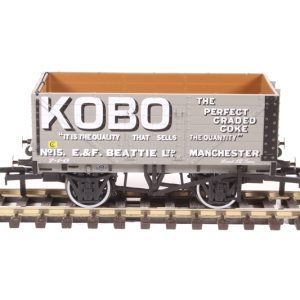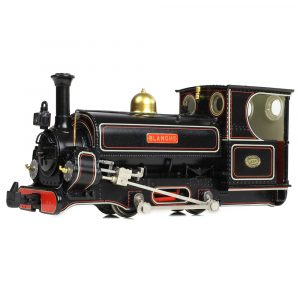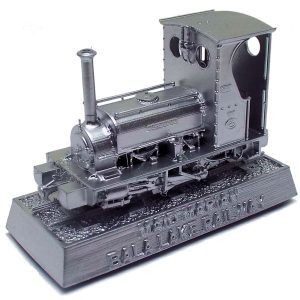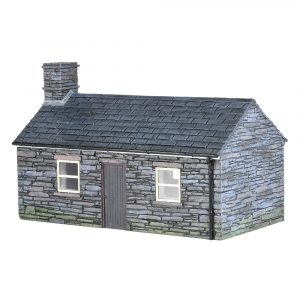Description
MAINLINE HUNSLET HISTORY
Most famous for their operation on the North Wales narrow gauge railways, the first main line Hunslet was built in 1882 by the Hunslet Engine Company of Leeds for the Penrhyn Quarry Railway. Named ‘Charles’, the locomotive’s somewhat unconventional appearance, with steeply inclined cylinders and connecting rods located on the inside of the coupling rods, would be repeated eleven years later when ‘Linda’ and ‘Blanche’ were constructed. Known affectionately by many enthusiasts as ‘the Ladies’, they were ostensibly built to the same 0-4-0 saddle tank design as ‘Charles’, although the ‘Ladies’ did incorporate some differences when compared to their elder. They had larger fire grates for one, round spectacle glasses in the front cab sheet rather than the square ones fitted to ‘Charles’ for another, and were also fractionally longer.
Penrhyn Quarry was the largest slate quarry in the world at the end of the nineteenth century and the trio of Hunslets spent their days hauling slate trains over the Penrhyn main line from the vast quarry complex at Coed-y-Parc, near Bethesda, to Port Penrhyn, just a stone’s throw from Bangor on the North Wales coast. Here, slate products were transferred to standard gauge railway wagons or ships for onward transport around the UK and further afield. Whilst smaller locomotive such as the Quarry Hunslets were used to work the quarry’s internal railways, the larger, more powerful Mainline Hunslets worked the full trains from the quarry down to Port Penrhyn and brought the empty wagons back again – similar duties to those for which the Ffestiniog Railway employed the famous Double Fairlies.
During their working lives the three locomotives underwent several changes, all gained full-height rear cab sheets, replacing the original half-height sheets, welded tanks were fitted in place of the original rivetted versions and various sandbox arrangements were seen, amongst other improvements during their time on the Penrhyn line. By the mid-twentieth century traffic on the Penrhyn Quarry Railway was in decline and in 1962 the last trains ran. ‘Charles’ had already been retired in in the mid-1950s, but the Ladies worked on until the very end.
Offered for sale upon closure of the railway, ‘Linda’ was quickly loaned to the Ffestiniog Railway, arriving there only three days after hauling her last train on the Penrhyn Quarry Railway. In 1963 ‘Linda’ was purchased by the Ffestiniog Railway and ‘Blanche’ too was acquired in the same year, arriving at the railway in December 1963. Both Ladies have been modified by the Ffestiniog Railway since their acquisition, most notably with the fitting of front pony wheels and tenders, becoming 2-4-0ST+Ts (saddle tank tender engines). With 2023 marking 60 years since the pair were brought by the Ffestiniog Railway, they are unquestionably two of the most useful engines in the railway’s fleet and are as popular as ever with visitors, staff and volunteers alike.
‘Charles’ was also offered for sale, but with the boiler condemned, the Ffestiniog Railway declined. Instead, ‘Charles’ was loaned to the National Trust and is now displayed at Penrhyn Castle – once the family home of the owners of Penrhyn Quarry.

![.Mainline Hunslet 0-4-0ST ‘Linda’ Penrhyn Quarry Lined Black (Late) [W]](https://shop.bala-lake-railway.co.uk/wp-content/uploads/2020/05/shop-header.jpg)
![.Mainline Hunslet 0-4-0ST 'Linda' Penrhyn Quarry Lined Black (Late) [W]](https://shop.bala-lake-railway.co.uk/wp-content/uploads/2022/12/download-4.jpeg)



